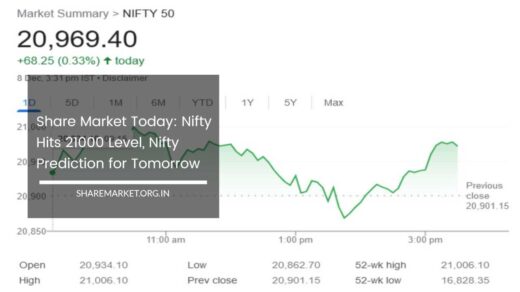Subam Papers IPO Listing: Stock lists at 6% discount on BSE SME

Subam Papers IPO Listing
Subam Papers IPO Listing: A Disappointing Debut Amidst Rising Debt and Investor Concerns
The recent IPO listing of Subam Papers, a company specializing in kraft paper and related products, has drawn attention for all the wrong reasons.
Launched on the SME platform of the BSE, the shares entered the market at a disappointing 6% discount.
Despite significant investor interest during the IPO phase, the initial trading performance raised eyebrows, reflecting broader concerns about the company’s financial health, particularly in light of its increasing debt levels.
IPO Performance Overview
Subam Papers’ IPO was open for subscription from September 30 to October 3, aiming to raise ₹93.70 crore.
The offering received an overwhelming response, with an overall subscription rate of 92.93 times. This indicates a strong appetite among investors, especially Non-Institutional Investors (NII), whose segment was subscribed 243.16 times.
Qualified Institutional Buyers (QIB) and retail investors also showed notable enthusiasm, with subscription rates of 57.18 times and 48.97 times, respectively.
The company issued 6,164,800 new shares at a face value of ₹10, priced at ₹152 per share. However, upon debut, Subam Papers’ stock listed at ₹142 on the BSE SME platform, representing a 6.58% decline from the offer price.
The disappointing listing was exacerbated when the shares hit a lower circuit limit of ₹134.90 shortly thereafter.
Although the stock later rallied to close at ₹149.10, the first trading day ended with a loss of 1.91% for IPO investors.
This performance raises questions about investor sentiment and market confidence in the company’s future.
Company Background and Business Model
Founded in October 2006, Subam Papers is engaged in the manufacturing of kraft paper and related products.
The company utilizes waste paper as its primary raw material, reflecting a commitment to sustainability and recycling.
Its products cater to a diverse array of industries, including automotive, textiles, fast-moving consumer goods (FMCG), food and beverage, pharmaceuticals, electrical and electronics, and printing.
The utilization of recycled materials not only positions Subam Papers as an environmentally conscious player but also places it within the growing sector of sustainable manufacturing.
However, the company’s financial stability is paramount for it to capitalize on these market opportunities.
Financial Health: A Mixed Bag
A closer examination of Subam Papers’ financial health reveals a story of volatility. The company recorded a net profit of ₹26 crore in FY 2022, indicating a solid performance.
However, this was followed by a slight loss of ₹26.79 lakh in FY 2023, raising concerns about its operational stability.
Fortunately, the company rebounded in FY 2024, reporting a net profit of ₹33.41 crore, suggesting a potential turnaround.
Revenue figures have also fluctuated significantly. In FY 2022, the company generated ₹332.59 crore in revenue, which soared to ₹510.62 crore in FY 2023.
However, this was followed by a decline to ₹496.97 crore in FY 2024, reflecting inconsistency in revenue streams.
Such fluctuations could signal issues in demand forecasting, production efficiency, or market competition.
An alarming aspect of Subam Papers’ financials is the sharp increase in debt, which rose from ₹155.73 crore to ₹183.41 crore during the same period.
This growing debt burden raises red flags about the company’s long-term sustainability and its ability to navigate financial challenges.
Investors often scrutinize debt levels, as high leverage can lead to increased risk, especially in fluctuating market conditions.
Use of IPO Proceeds
The funds raised through the IPO are earmarked for various strategic purposes, including capital expenditure needs, investments in subsidiaries, and general corporate purposes.
This allocation is crucial for the company, as it seeks to strengthen its operational capabilities and expand its market presence.
Capital expenditure might be directed toward upgrading production facilities, enhancing technology, or increasing production capacity—all of which are essential for meeting growing demand and improving efficiency.
Investments in subsidiaries could also offer opportunities for diversification, allowing Subam Papers to tap into new markets or product lines.
This approach could mitigate risks associated with relying solely on its core kraft paper business.
However, effective implementation of these strategies is vital for translating raised funds into tangible growth and improved financial health.
Market Sentiment and Investor Concerns
The disappointing debut of Subam Papers’ shares raises broader concerns about investor sentiment.
While the strong subscription rate during the IPO reflects initial enthusiasm, the subsequent drop in share price suggests that investors may be cautious about the company’s long-term prospects.
Factors such as increasing debt, revenue volatility, and fluctuating profits contribute to an overall sense of uncertainty.
Investors are likely to be closely monitoring the company’s upcoming quarterly results, operational announcements, and strategic initiatives.
Effective communication from management regarding how they plan to utilize the raised capital will be critical in rebuilding confidence among shareholders.
Final Remarks
In summary, the IPO listing of Subam Papers serves as a cautionary tale for investors, highlighting the complexities of navigating the stock market, especially in the context of financial volatility.
While the strong investor interest in the IPO underscores the potential of Subam Papers in the sustainable manufacturing sector, its disappointing market debut and rising debt levels present significant challenges.
Moving forward, the company’s ability to effectively utilize the funds raised through the IPO, manage its debt, and stabilize its revenue streams will be crucial for its success.
Investors will be keenly watching how Subam Papers addresses these challenges in the coming months, as its long-term viability and growth potential depend on strategic decision-making and operational excellence.

















